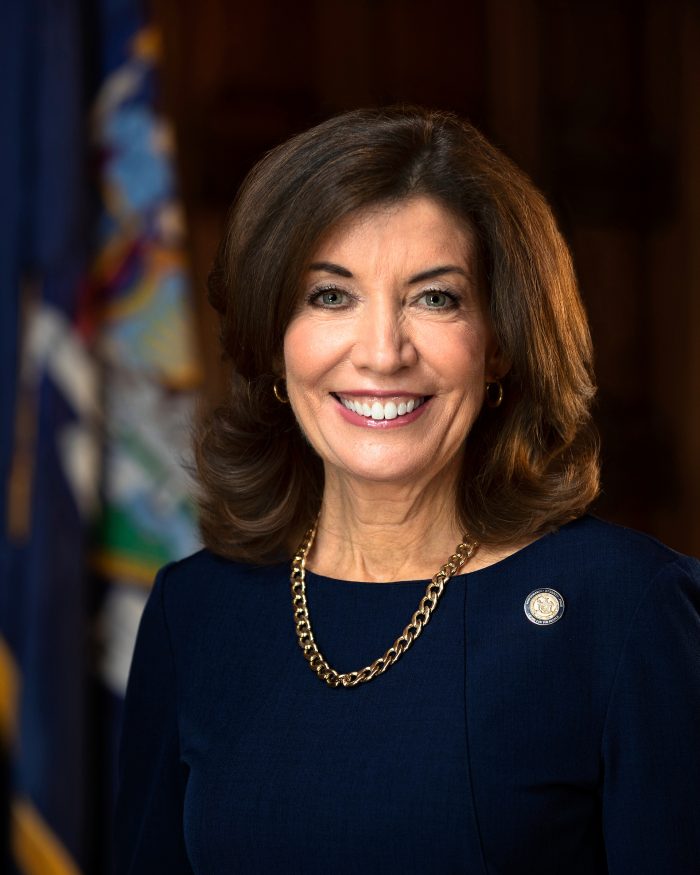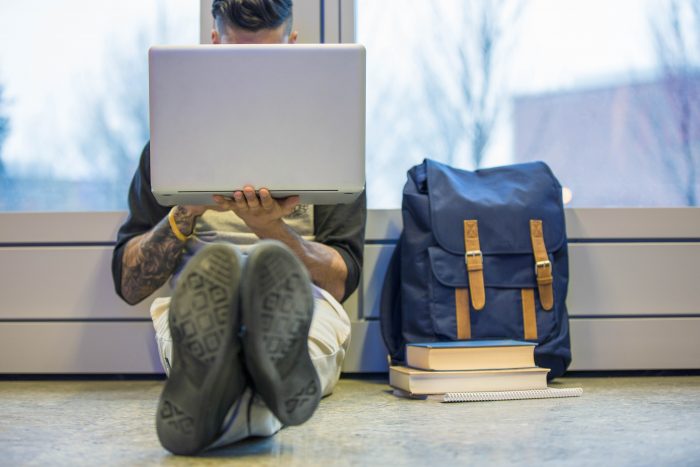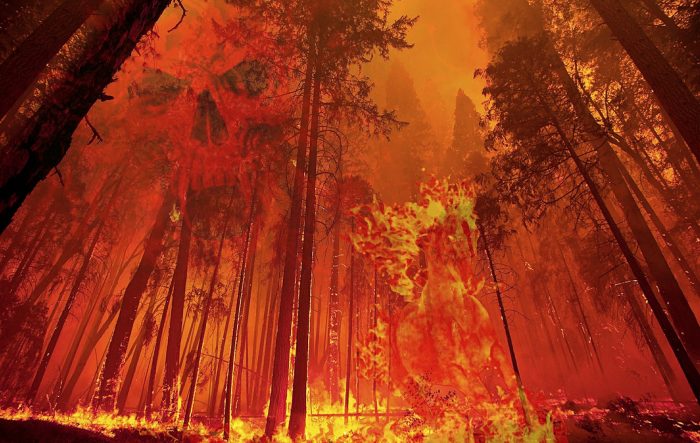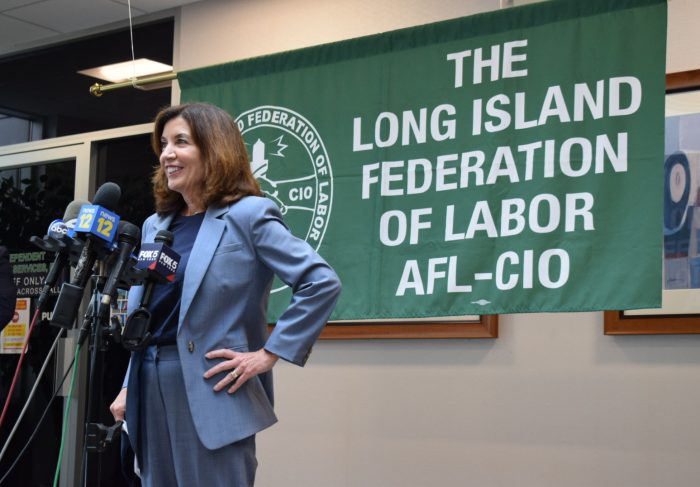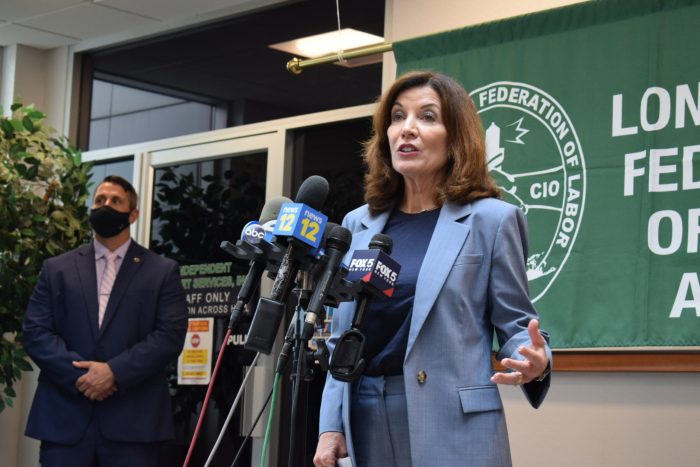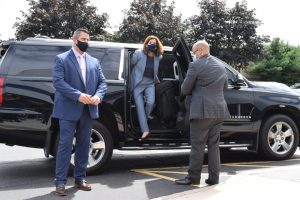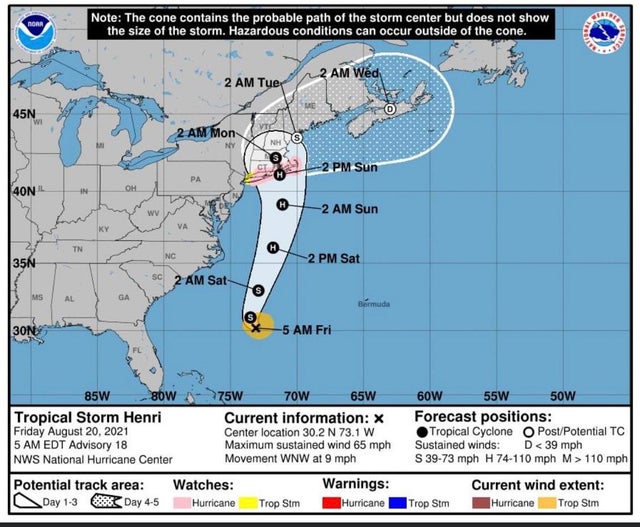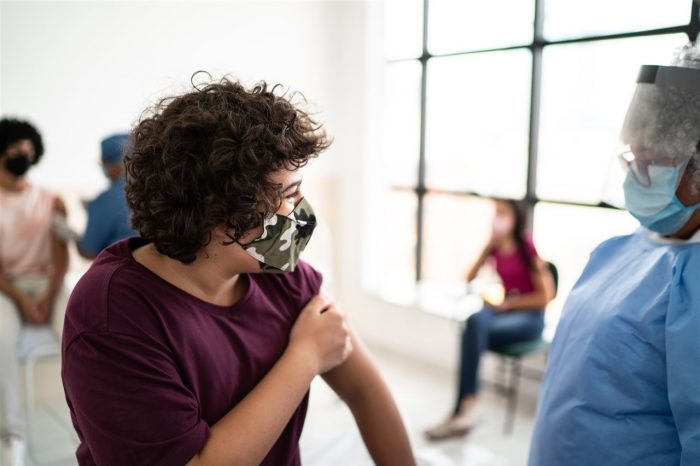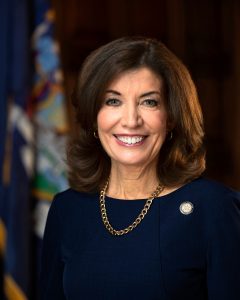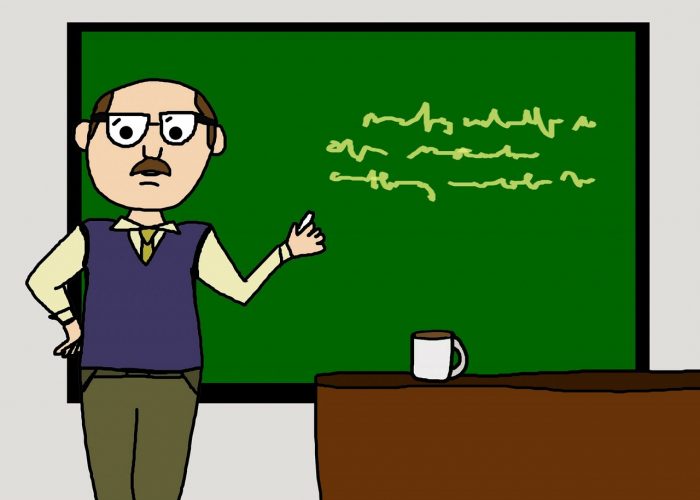Nineteen states have never had a female governor and, up until this week, neither did New York. That’s progress.
When former Gov. Andrew Cuomo (D) resigned amongst nearly a dozen sexual harassment allegations, and after a thorough, months-long investigation, his lieutenant governor, Kathy Hochul (D), was given the opportunity to make history. The mother of two from Buffalo has had a long career in politics and advocacy. She even sat in Congress.
New York now joins eight other states — Oregon, Alabama, Kansas, New Mexico, South Dako-ta, Iowa, Michigan and Maine — who have lady leaders as heads of their state.
And practically minutes after she took her oath early Tuesday morning, she said during a short press conference that she wants her constituents to “believe in their government again.”
But that’s going to be hard for many New Yorkers — especially the ones who lost their faith in government throughout the COVID-19 pandemic.
Unfortunately for Hochul, she had barely been in office for even a full day when commenters online began to bash her for her mask-mandating policy.
As of Tuesday afternoon, she said all school districts in the state of New York must require masks for their students, faculty and staff to be fully vaccinated or tested weekly.
People are furious, according to the online comment threads. They’re not necessarily mad about the mandate — although that’s become a debate within itself. They are mad she hasn’t addressed all the other issues that are impacting New Yorkers — homelessness, food insecurity, the nursing home deaths during COVID and high taxes.
When reading through the comments on a story that was published by The New York Times, New York Post and locally, Newsday, readers are finding issues already with our new leader.
Can we just give her a second to settle in? It was barely 24 hours before she even set foot in the governor’s mansion in Albany, and people were already assuming she’s failing us.
People might be upset by the mask mandate, but we’ve been through this before. Remember, the COVID-19 pandemic is hitting its year-and-a-half mark. That means we have been wearing masks, social distancing, hand sanitizing and Zooming for almost two years. We’re used to these policies.
No one wants to wear masks, especially if they’ve been vaccinated. But right now, with the Delta variant — and whatever other mutations are out there coming soon — we need to be safe.
This summer, we had a taste of freedom again. We were allowed to see friends and families, weddings were back on and kids were able to attend their graduations in person — and that’s all because we wore masks for practically a year before that. When the vaccine came out, that helped us all, too.
Let’s just listen to Hochul. Let’s not complain.
The sooner we tackle this problem, the sooner we can get back to whatever normal is the new normal.
Don’t judge her policies just yet — she’s had a lot of experience and whoever jumped into Cuomo’s seat was in for it.
She was handed a pile of dirt and now needs to make it beautiful.
Trust her actions, give her a chance. Embrace the fact that someone new is in office and remember: A mother always knows best.

